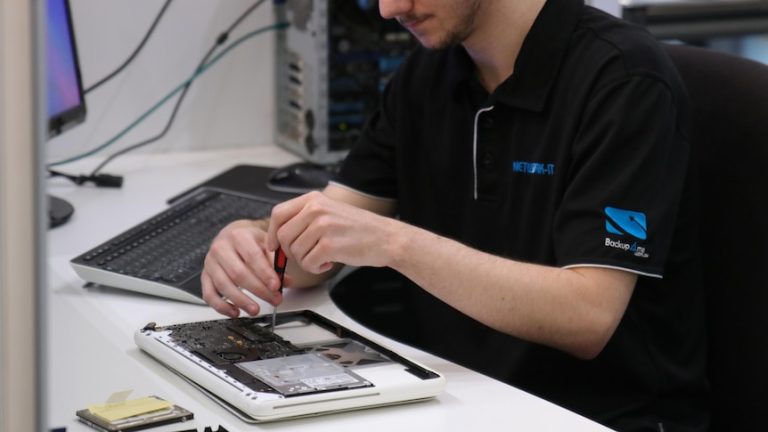PICTURE: Veena Sahajwalla, third from left with Anna Noon, Sam Doove and Gabby Clappison at the Waste and Circular Economies seminar at Warners Bay Theatre.
Reimagining waste as a raw material for remanufacturing
‘WASTE is waiting to be liberated into new materials,’ said Veena Sahajwalla, Australian Research Council (ARC) Laureate Professor, School of Materials Science and Engineering, UNSW. Professor Sahjawalla, is an internationally recognised materials scientist, engineer and inventor, revolutionising recycling science. She was speaking at the Waste and Circular Economies seminar on Friday 19 August. ‘We need to review how we look at waste, not as being a waste product but rather reimagining it as raw materials for remanufacturing into new products – reformation into a new component. When viewed at the micro-level these small items become part of the larger remanufactured end products,’ said Professor Sahajwalla.
For example, green manufacturing is using 3D printing to product recycled filament for use in mircro-factories. We end up with circular solutions to what were intractable problems. It is anticipated there will be micro-factories for glass, textiles (as part of a global flow for apparel), waste furniture and green ceramics.
Collaboration and innovation are critical along with the alignment of recycling and manufacturing. Establishing economies of purpose providing social value adds up to holistic solutions for local regions. Supply chains need circular collaborations, to inspire others to become engaged in the circular success story. And not to be overlooked is the need to reduce – an oft repeated qualification made by Veena throughout her presentation.
……………………………………………………………………………
These popular pods have a built in problem
THE amount of coffee (6 grams) materials** (3 grams) and energy that go into manufacturing coffee pods and the amount of energy and machinery required to reclaim the coffee grounds and the aluminium and plastic materials makes these little convenience capsules ecologically questionable. And that’s only for the pods that make it into the recycling loop.
The vast majority – 100s of millions – of these little ubiquitous products end up in landfill, where they take forever to degrade. Love them or hate them, they should prompt a serious think about: how much effort needs to go into making a product so that, we can minimise our effort when the craving for a coffee comes upon us.
In the long run, can the Earth sustain this product along with all the other convenience products we seem to “must-have” today, that we didn’t have twenty years ago. What will the next convenience thing be? And the next? And the next? Are there limits? Where and when does it end? Munibung Hill and her residents would like to know.
“The point with coffee pods isn’t about recycling — it’s about cutting down on the amount of stuff that we need to throw away or recycle.”
Piotr Barczak, waste policy officer at the European Environmental Bureau.
If we can’t talk ourselves out of or wean ourselves off coffee pods then the least we can do is pay the price to be part of the Pod Back programs operated by some coffee pod manufacturers, such as Nespresso.
Writing in Bibium, the author concludes:
Nespresso coffee pods hold 6g of coffee in 3g of packaging and while it is possible to recycle almost all the coffee pods currently on the market, recycling figures are hard to come by. With sales of pods expected to treble in the UK by 2020, millions of pods will continue to be loaded onto landfill sites for years to come providing archaeologists in the next millennium with an insight into twenty-first century consumer habits.
** The materials include a specialised plastic made of four different layers. John Sylvan, creator of the Keurig K-Cup
………………………………………………………………………………….
Here is how you can recycle your coffee capsules
BY giving your Nespresso coffee capsules a second life, your Nespresso coffee won’t just taste good, it will feel good too. At least that’s the company blurb. They are not given a second life. Using heavy industrial machinery, the coffee is retrieved and the capsules recycled. It’s a very energy and material intensive process, but it’s better than landfill.
By using a bulk recycling box to collect on behalf of your community or work-place, this program will capture a tiny percentage of the millions of these capsules produced. Fill the Nespresso Australia Post box (pictured) or satchel with used capsules and return via Australia Post.
…………………………………………………………………………………
Our bildungsroman storyline
IN: Fixation: How to have stuff without breaking the planet, Sandra Goldmark (see book section above) writes about the negatives of living out a flawed story.
 She says: It’s a land of linear progress … At least that’s how the story goes – where aspiring to endless growth was to be applauded and encouraged. The dream is looking increasingly threadbare in the twenty-first century, as resources prove to be manifestly not endless, and this history of expansion and exploitation of people and places continues to bear painful fruit.
She says: It’s a land of linear progress … At least that’s how the story goes – where aspiring to endless growth was to be applauded and encouraged. The dream is looking increasingly threadbare in the twenty-first century, as resources prove to be manifestly not endless, and this history of expansion and exploitation of people and places continues to bear painful fruit.
Nonetheless, the bildungsroman [A Bildungsroman is a growing up or “coming of age” of a generally naive person who goes in search of answers to life’s questions with the expectation that these will result in gaining experience of the world. ] of the American West still influences many contemporary assumptions about what has value, what progress means and what kinds of labour matter. — page 110
that flies in the face of a finite earth.




